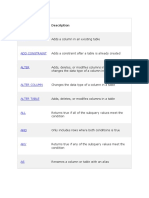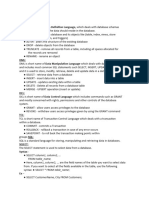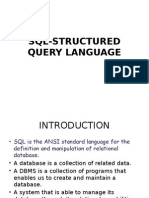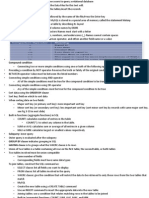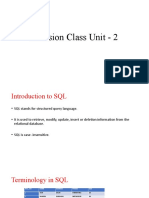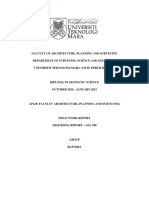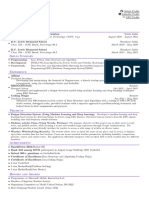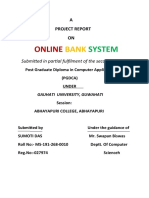0% found this document useful (0 votes)
75 views2 pagesSQL Keywords and Descriptions
The document provides a comprehensive overview of SQL keywords categorized into Data Query, Data Manipulation, Data Definition, Constraints, Joins, Transaction Control, Data Control, and Miscellaneous. Each category includes essential keywords with their descriptions, such as SELECT for retrieving data and INSERT INTO for adding records. This serves as a quick reference for understanding SQL commands and their functionalities.
Uploaded by
kishore.v396Copyright
© © All Rights Reserved
We take content rights seriously. If you suspect this is your content, claim it here.
Available Formats
Download as PDF, TXT or read online on Scribd
0% found this document useful (0 votes)
75 views2 pagesSQL Keywords and Descriptions
The document provides a comprehensive overview of SQL keywords categorized into Data Query, Data Manipulation, Data Definition, Constraints, Joins, Transaction Control, Data Control, and Miscellaneous. Each category includes essential keywords with their descriptions, such as SELECT for retrieving data and INSERT INTO for adding records. This serves as a quick reference for understanding SQL commands and their functionalities.
Uploaded by
kishore.v396Copyright
© © All Rights Reserved
We take content rights seriously. If you suspect this is your content, claim it here.
Available Formats
Download as PDF, TXT or read online on Scribd
/ 2
